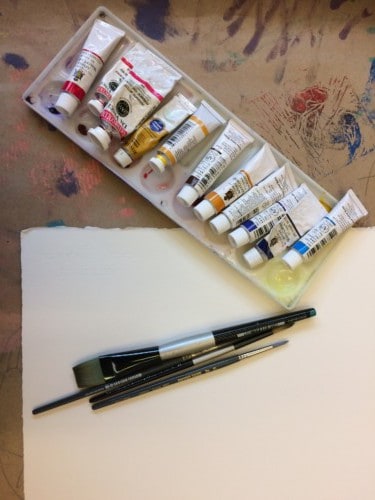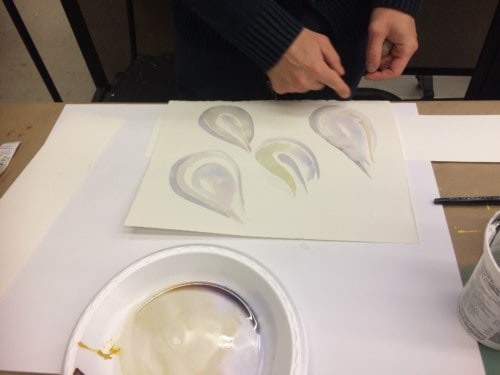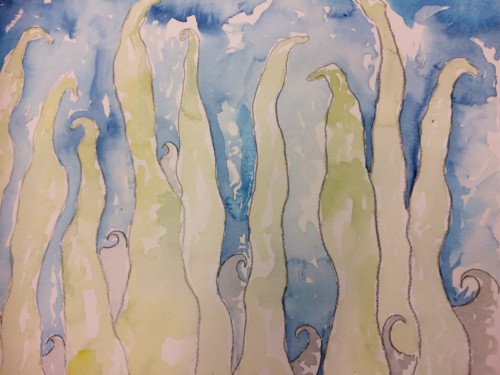I dropped in to try out Watercolour Explorations: Flowers at the AGO last Friday night. The class took place in the gorgeous Anne Tanenbaum Gallery School, which I’ve always admired from above but have never actually been in. Making art in this expansive open-concept space (alongside other art-lovers) is motivating.

When I arrived, the materials were neatly laid out, ready to go. I found a spot at one of the lengthy communal tables and set up my mini-studio. The participants were all women, ranging in age from late twenties to early sixties. The tone was laid-back and friendly, with offers to lend brushes and smiles of encouragement. I haven’t painted since before my kid was born, so I am a lot out of practice, but I relished picking up a brush again. In short, the course is an excellent segue to get back into art, no matter how far you’ve wandered.
Although no flowers were involved (yet), we did learn a bit about this persnickety, delicate medium. In the absence of class instructor Kelley Aitken, our substitute teacher, Michael Toke, led us through some colour theory. Here’s what I learned:
Your eye doesn’t like yellow and blue mixed: Apparently, this confuses your brain, with each cancelling the other out. It is better to buy a pure green (sap, viridian) to get the most natural-looking hue.
Red pronounces itself: We are biologically wired to notice certain colours first. Cooler blues/greens will always seem to constitute ‘background’ colours, as they are what we are used to seeing in nature (forests, trees, lakes). Warmer colours (red, orange) will pop out, as they tend to indicate something we should draw our attention towards (blood, danger, birth, sex). Even teams in red tend to win more.

Make shadows: If you want your portraits to pop, apply your shadows first as washes of green, then paint over with warm colours to deepen them.
Precious hues: Ultramarine pigment used to be made of ground lapis lazuli – the most expensive blue pigment ever. Now, the synthetic version does the job, for a fraction of the price.
Screw the rules: Toke took us up to the gallery to show us the work of David Milne, who often used watercolour with a highly-saturated, dry brush. His motivation? To show us that watercolour doesn’t have to be washy, and to open our minds to the fact that art materials are endlessly malleable. We just need to be open to experimentation.

Sign up for this and other classes here.


 Follow Us On Instagram
Follow Us On Instagram

 EXCLUSIVE TICKET GIVEAWAY!
EXCLUSIVE TICKET GIVEAWAY! This Thursd
This Thursd @insideoutfestival jus
@insideoutfestival jus